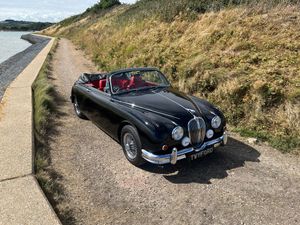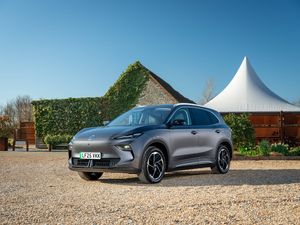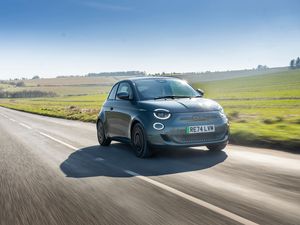First Drive: Can the Cross Country makeover give the Volvo EX30 off-road credentials?
With its muscular exterior styling and dual-motor setup, is the Cross Country worth the upgrade over the standard car? Cameron Richards finds out.
What is it?

Back in the day, Volvo was the king when it came to family estates.
With their boxy designs and cavernous interiors, it’s no wonder that so many families loved these Swedish workhorses.
However, now that SUVs have become the norm, Volvo, in the last few years, has adopted the trend and has focused solely on this segment.
The firm’s ‘Cross Country’ range of vehicles was killed off when the company axed the V40 hatchback; however, times have changed and Volvo has decided to bring back the nameplate and stick it on its smallest model in the range. Meet the EX30 Cross Country.
What’s new?
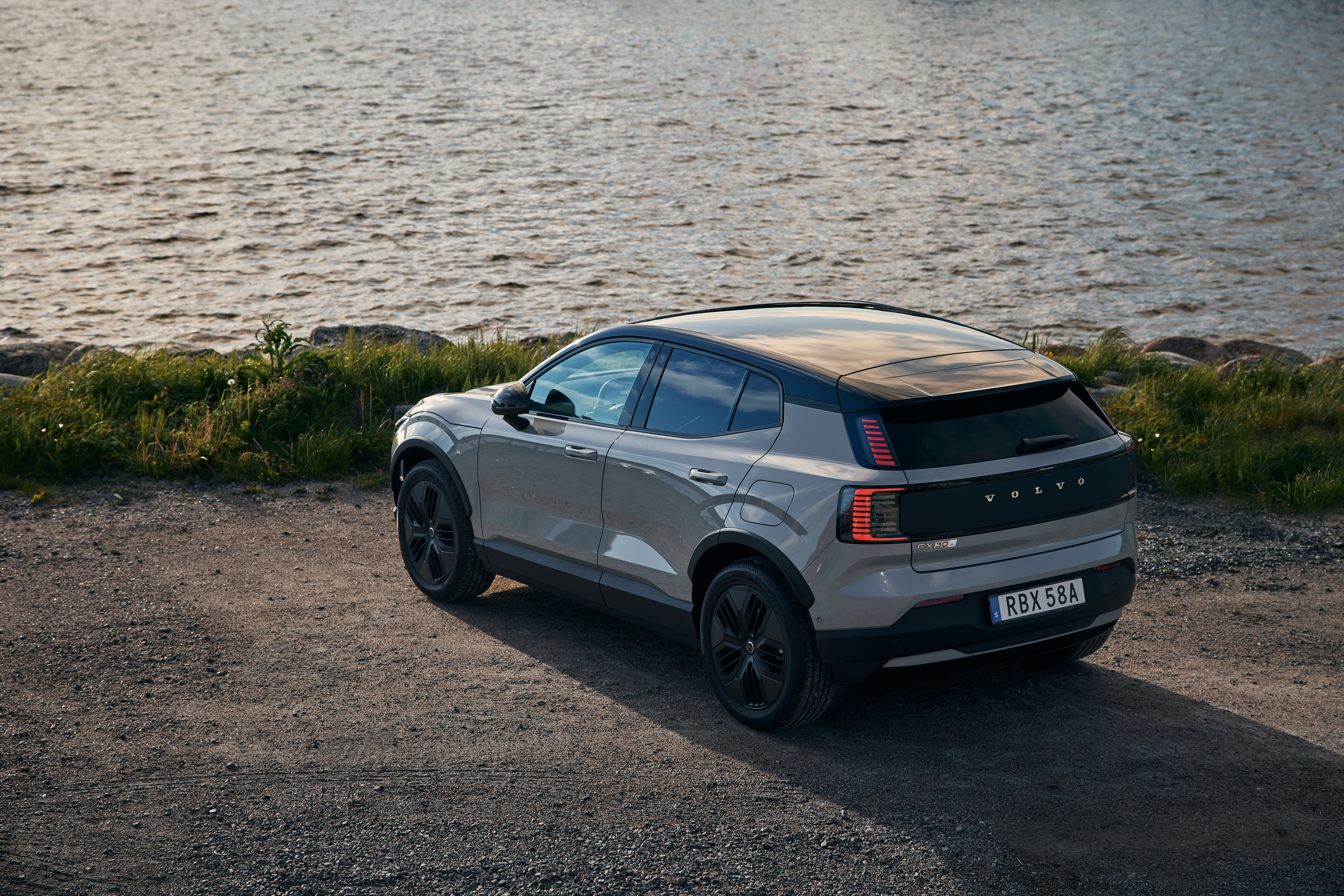
The name ‘Cross Country’ represents a touch of rough and ready off-road appeal to Volvo’s standard model line-up.
The exterior design features two-tone paintwork, a 19mm raised ridge height and thicker wheel arch extensions which give the car a bolder look.
You can also get several accessories to make the car even more capable with a load carrier, a roof basket and 18-inch all-terrain tyres.
There is a more powerful ‘Performance’ dual-motor setup and the vehicle comes purely as an EV only.
Plus, all models come with the same minimalist interior as on the standard EX30, which feels modern and is all about sustainability.
What’s under the bonnet?
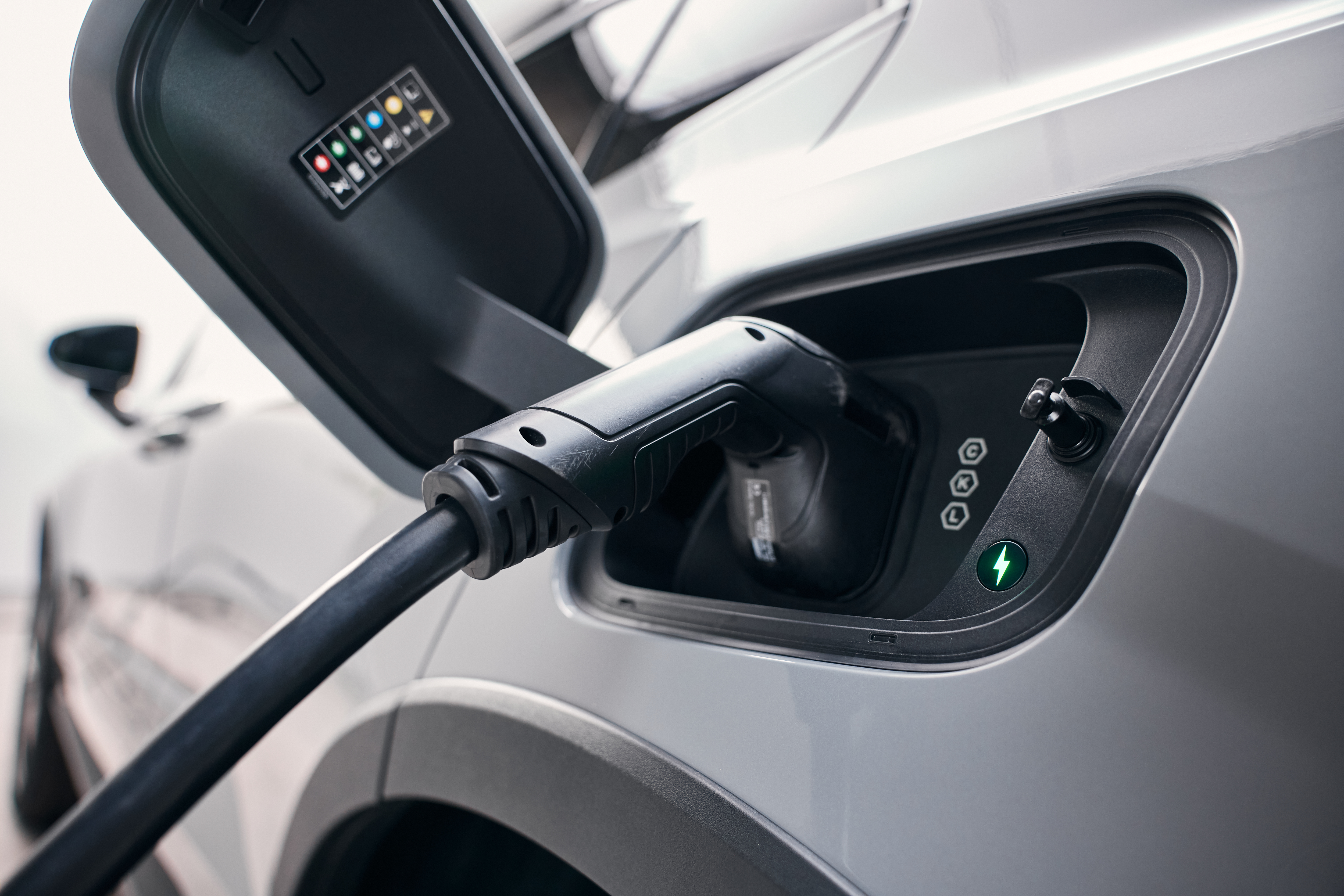
It’s simple. There is just one powertrain on the Cross Country and that’s a 69kWh battery pack and dual electric motors located on the front and rear axle.
In terms of power, this setup produces a total of 422bhp and 543Nm of torque, while 0-60mph takes just 3.5 seconds and the car tops out at 112mph.
Volvo claims that the car can travel up to 265 miles between top-ups, and all models come with the added benefit of all-wheel drive too.
When it comes to charging, the Cross Country can be topped up at speeds of 175kW from a DC plug, allowing for a 10 to 80 per cent charge to take around 27 minutes.
What’s it like to drive?
Volvos have always focused on comfort rather than driving dynamics; however, it’s the best of both worlds with the Cross Country.
The instant torque and punchy acceleration from the dual-motor setup are impressive, while the steering feels direct and relatively sharp for an SUV.
Over the lumps and bumps, the ride is supple and manages to be smooth without feeling jittery, due to the thicker tyres that are fitted to the car as standard.
Volvo has also updated the one-pedal drive function – with a high and low setting – allowing town driving to be an absolute doddle. Simply lift off the accelerator and the car will naturally start slowing down as if you’ve applied the brakes.
To summarise, the car’s driving characteristics are pleasant, relaxing, yet engaging, but the sheer power from its dual motors does seem over the top for a compact family car.
How does it look?
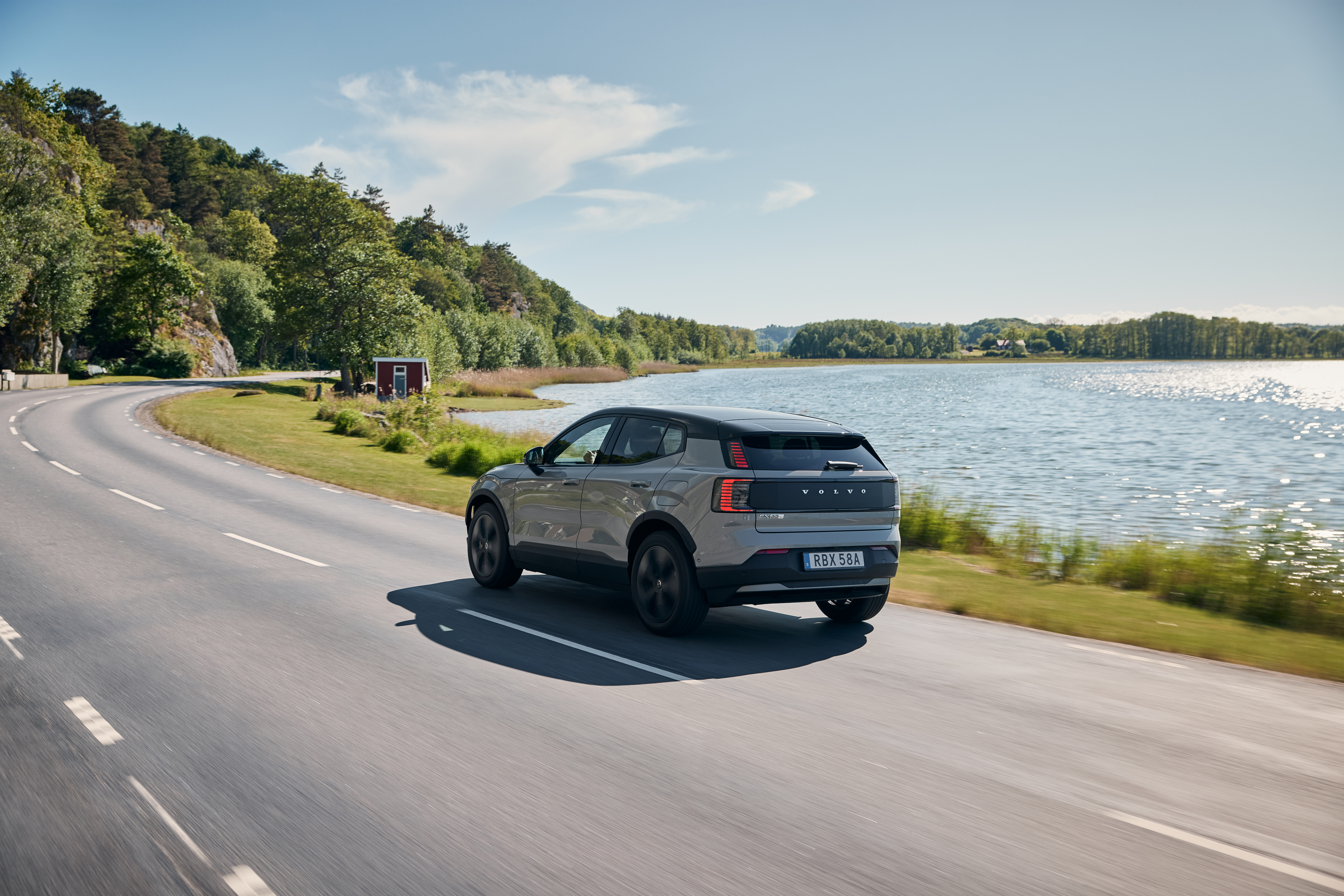
The car’s exterior design follows on from the standard model, with the exception of a few details.
The front and rear now feature black panelling, while the wheel arch extensions are finished off in matte black and there is ‘Cross Country’ badging located on the front doors, C-Pillars and integrated into the rear bumper.
The standard front skid-plate gives the car its distinctive ‘Cross Country’ look, while the black wheels and chunky tyres make it look more muscular.
What’s it like inside?
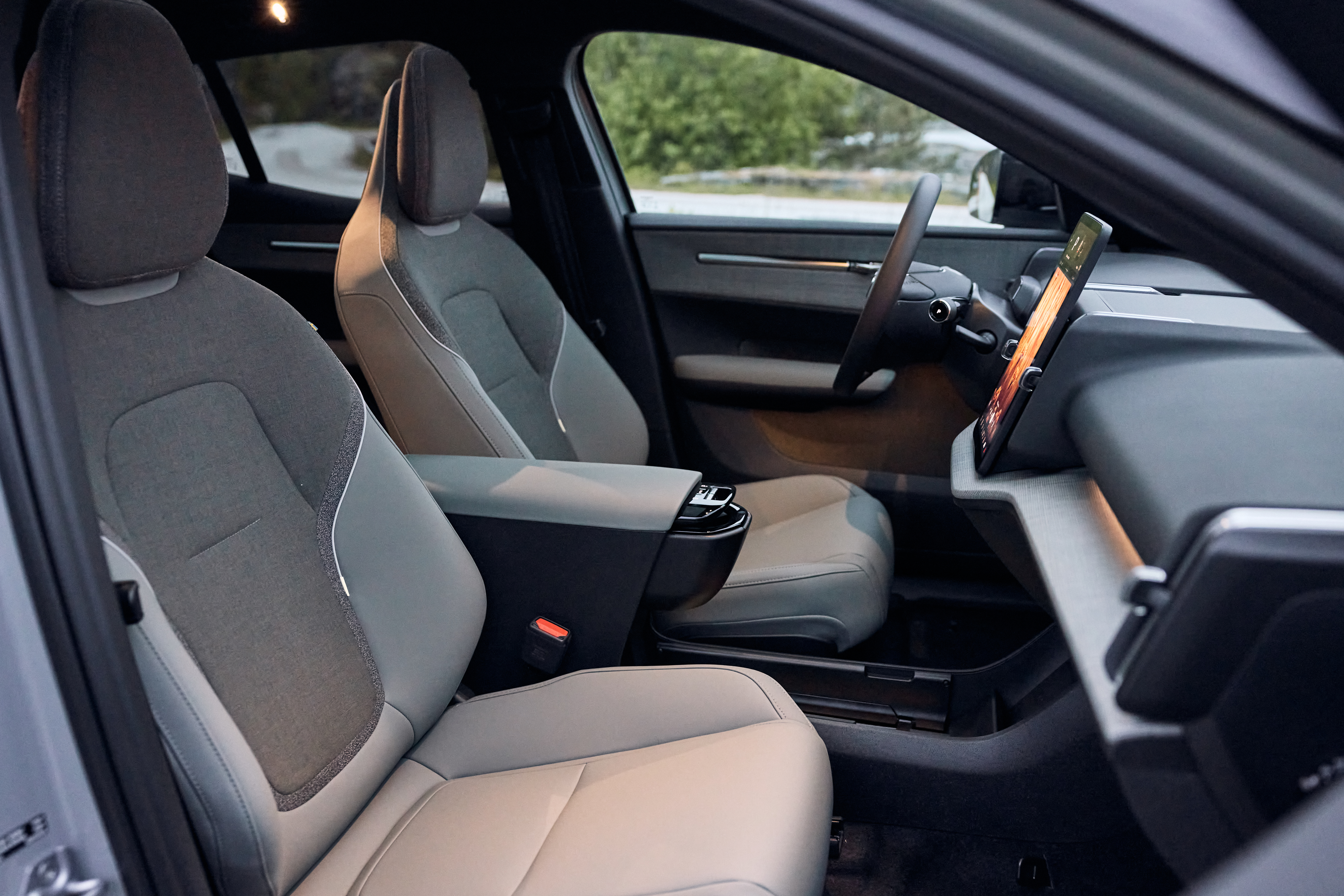
The interior is almost identical to the standard car with its minimalist dashboard layout.
However, when it comes to ergonomics, there is room for improvement with almost all the essential buttons located in the touchscreen system and even the window switches are awkwardly positioned on the centre console.
At least the design is fresh with a great use of sustainable materials dotted throughout, and you get quirky details like the floating door pulls.
There’s no shortage of storage either, with massive door bins, two cup holders, a glove box and the centre console features a gigantic underneath cut out.
Space in the back is good, with an acceptable amount of head and legroom. It’s just a pity that you can’t really slide your feet underneath the front seats to really stretch out.
Sadly, the boot space is down on its rivals, offering just 318 litres or 904 litres with the rear bench folded down. In comparison, a Mercedes EQA provides 340 litres or 1,320 litres with the second row of chairs pushed down.
But, at least the Volvo gains some extra underfloor storage to fit the charging cable in and there’s an additional 19 litres of room under the front boot.
What’s the spec like?
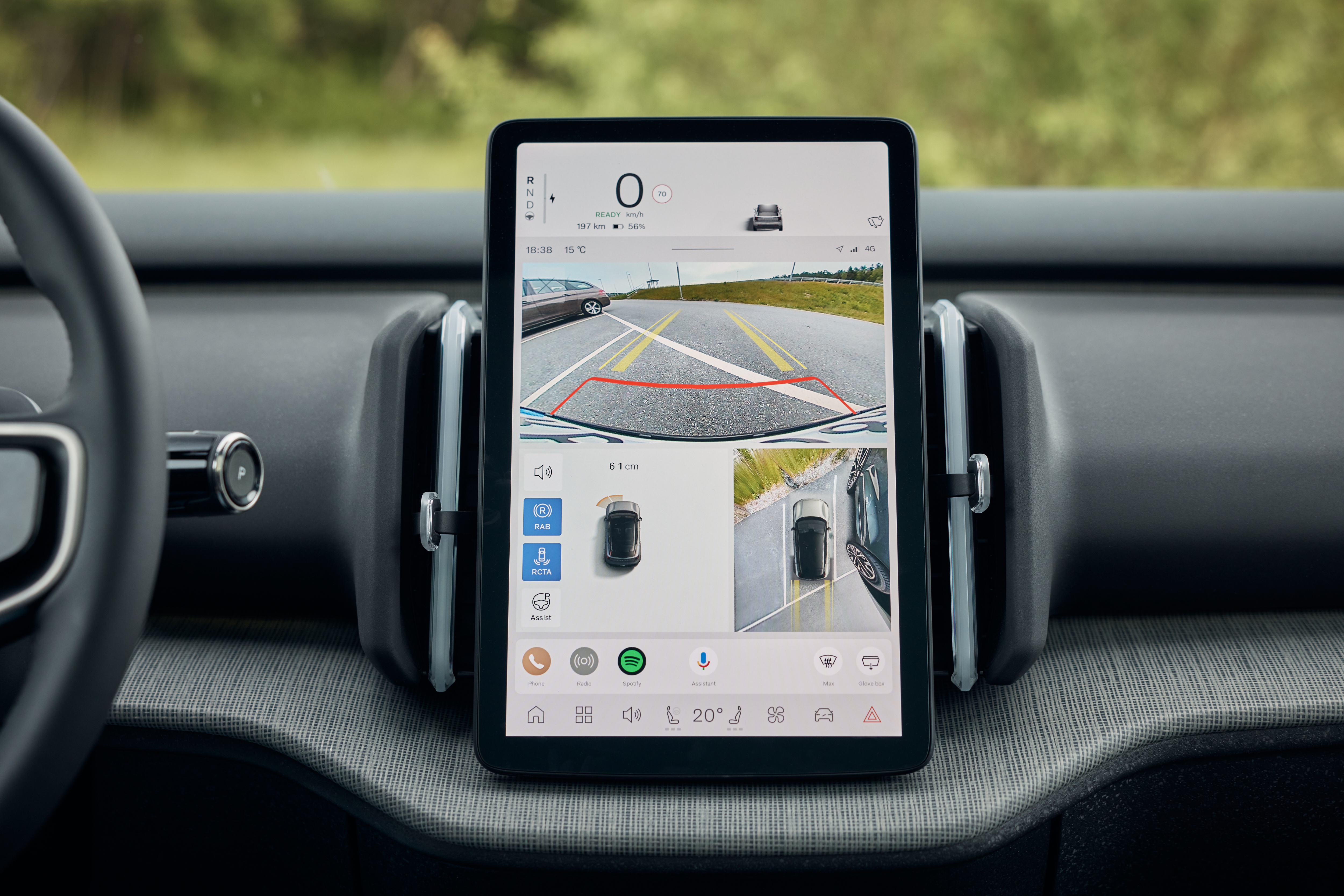
There’s no shortage of equipment as the Cross Country comes in flagship ‘Ultra’ specification as standard.
That means it boasts a glass panoramic sunroof, a 360-degree camera, a 12.3-inch infotainment system, a powered tailgate, as well as a plethora of safety tech.
Prices start at £47,060 – which is £14,000 more than the entry-level EX30 – however, you do get the Performance dual-motor setup and all-wheel drive thrown in.
However, at these sorts of prices, it makes the car seem rather expensive compared to the standard model.
Verdict
The EX30 Cross Country proves that electric SUVs can have a unique identity, while feeling premium and providing sharp driving dynamics.
It’s not perfect, with its confusing and fiddly infotainment screen, limited physical buttons, and the price is rather steep, too.
The biggest issue is its purpose. The standard car is a great alternative to its rivals, however, this new model just feels like it’s trying to fill a gap in the market.
As a result, the Cross Country just looks like an overpriced and rather unnecessary solution to a problem that doesn’t exist – you might be better off just buying the standard EX30 instead.

